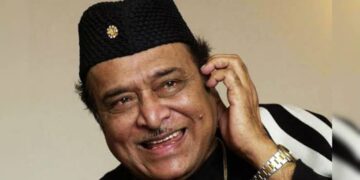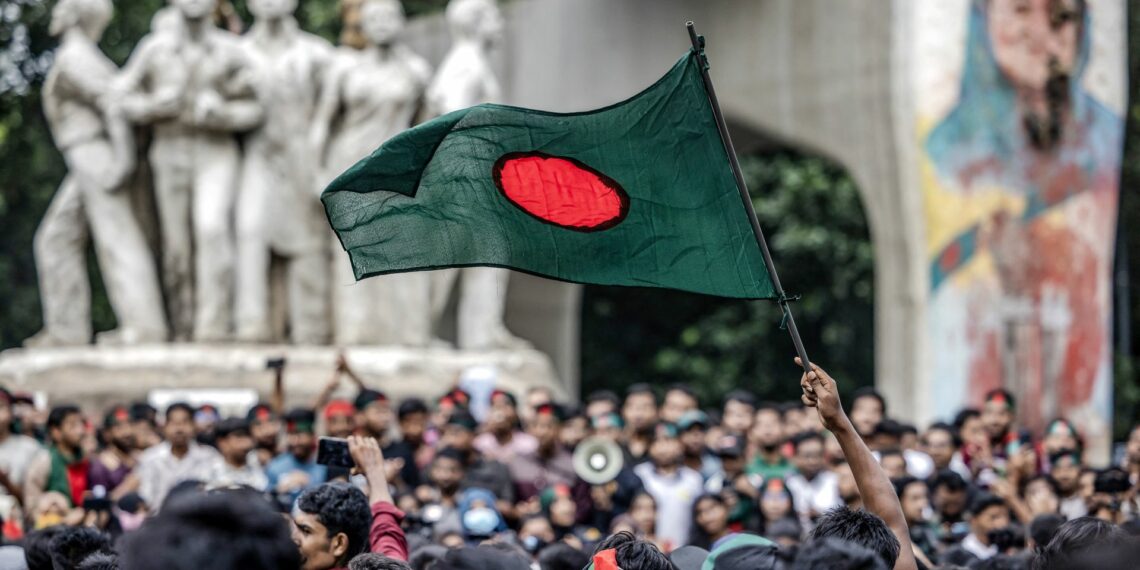Since 5 August 2024, Bangladesh has tested that fragility with unsettling force. What began as a Facebook-fuelled uprising against Sheikh Hasina’s absolute power soon dismantled government, judiciary and political order alike. A year on, the justice system finds itself in an ambivalent place—caught between the promise of reform and the peril of rupture. The blunt, unavoidable question is whether this moment marks the dawn of accountability or the twilight of judicial autonomy.
The Yunus-led interim administration that emerged did so without constitutional legs. The 1972 Constitution provides no scope for such a body and the President was forced to dissolve Parliament to legitimize its existence. It has now been a year—too long for a traditional caretaker government, except in 2007. Pro-protesters initially invoked the doctrine of necessity, a familiar but discredited tool in South Asia’s constitutional culture. In an attempt to dress this fragility with judicial garb, the government now cites an “advisory opinion” of the Appellate Division. Yet many believe this opinion was crafted under military sentinel or even manufactured after the fact. A petition demanding evidence of the government’s reliance on Article 106, the advisory opinion provision for the President, still languishes unanswered. In effect, Bangladesh has been governed for a year without a constitutional compass, with legitimacy borrowed rather than earned.
Into this vacuum, violence poured. In the days after 5 August, lynching supplanted trial, and vengeance masqueraded as justice. Rights groups counted 174 people killed by mob violence between August 2024 and May 2025. Victims ranged from political workers to small vendors. At Dhaka University, student Tofajjal was killed to music and dance; at Jahangirnagar, Masud met a similar fate. Md Shohagh was crushed under a rock as his killers danced on his chest in broad daylight. Court premises themselves were not spared, as mobs stormed judicial complexes, beating accused persons in custody. Judges, fearing for their safety, hesitated to sit. The robe, once a symbol of dignity, became a garment of risk. Justice did not merely delay—it deserted.
This breakdown of judicial authority naturally engulfed the legal profession. Lawyers aligned with the fallen regime were targeted: chambers torched, bar associations fractured, over 150 practitioners jailed and dozens remanded. Some fled abroad; others melted into anonymity. A new group styling itself as “anti-fascist lawyers” declared themselves guardians of the revolution, but professional solidarity collapsed. Without the bar’s independence, the bench could not stand firm. Bail jurisprudence revealed the collapse of neutrality most clearly.
Opposition activists languished in remand week after week, while bail flowed freely for those aligned with the new order—BNP, Jamaat, NCP student activists. Horrifically, the latter even secured an indemnity for their protest-induced crimes from the interim government. Prof Yunus himself controversially received acquittal from labourer exploitation charges soon after he had assumed the office of the Chief Adviser. Critics aptly called it “selective justice.” Liberty became a partisan gift, not a constitutional guarantee.
These distortions in bail practice reached grotesque levels, as one close observer confided to this author: “Brother, I am sadly disappointed. An accused secures bail, yet at the prison gate he is seized again in a fresh case. In Feni, a magistrate issued a show-cause to the jail superintendent for tipping off police, but the response was swift retribution. The magistrate was shunted to Kurigram, the Chief Judicial Magistrate stripped of office and sent to Moulvibazar—after barely two and six months in Feni. So this, they say, is independence: judicial officers punished for defying arbitrariness. Even more appalling than the old regime. And to think Asif Nazrul once wrote so movingly of freedom—what a chilling spectacle.”
The purge at the summit of the judiciary was even more dramatic. One by one, judges of the Appellate Division resigned—some nudged, others hounded. Seniority, that old ritual of judicial modesty, was discarded. Justice Syed Refaat Ahmed, long sidelined but respected for his intellect, was suddenly vaulted as Chief Justice. In his wake, younger High Court judges and even politically loyal lawyers were elevated, leaving the impression less of reform than purge. Over twenty judges exited, and the symbolism was corrosive. When mobs chant in the corridors of justice and lawyers vie with each other in open court, appointments cease to be quiet acts of institutional humility and become instead the spoils of revolution. Carl Schmitt’s ominous dictum— “Sovereign is he who decides on the exception”—seemed rewritten for Dhaka’s Supreme Court, where sovereignty appeared to shift to partisan bars and angry crowds.
Perhaps the most shameful illustration of judicial collapse was the arrest of former Chief Justice ABM Khairul Haque, the lead author of the 2011 judgment abolishing the caretaker government system—a watershed in Bangladesh’s constitutional jurisprudence. On the thinnest of pretexts, he was implicated in a bizarre and unbelievable criminal case, handcuffed like a common felon, denied bail, and placed in remand. A constitutional opinion was, in effect, retroactively criminalised. This was not justice—it was humiliation, a spectacle designed to erase memory of judicial independence. And while the powerful were shamed, the powerless were not spared either. Azizul Huq, a rickshaw-puller, was arrested merely for offering a bouquet of flowers at 32 Dhanmondi, the burnt-down residence of Bangabandhu Sheikh Mujibur Rahman, the shrine of Bangladesh’s independence. The criminalisation of such a simple, symbolic act revealed how far the state had drifted from any credible idea of justice.
Another rivulet of the justice process flowed through the International Crimes Tribunal. Once a vessel of accountability for 1971, it was reconstituted by executive ordinance— without broad consultation, without Parliament and under the pressing deadline of mob fury. The Law Adviser, Asif Nazrul, even pledged publicly that Sheikh Hasina would be brought to justice before an election could take place in February 2026, going so far as to describe her crimes as “more grievous than those of the Pakistani military.” Prosecutors took a shortcut by turning former Police Chief Abdullah Al Mamun into an accomplice— a tactic that cast shadows over any credibility the trials may have had. Meanwhile, the higher judiciary, in a rare exercise of review power, acquitted a convicted war criminal— an act legally controversial and politically interpreted as encouragement to Jamaat-eIslami.
The irony was cruel: those who once defended war criminals were now appointed prosecutors, while the country’s longest-serving prime minister was arraigned without counsel of her choice, fairness, or due process.
As this unfolded, the Constitution itself was threatened with conflagration. A half-baked document styled the “July Charter” or “Declaration” was brandished as an alternative constitution—a misleading and conceptually flawed manifesto riddled with romantic promises. The so-called “July Revolution” was sold as emancipation, but many came to see it as misconceived, fraudulent in its promises, and reckless in its haste. To discard a Constitution born of a liberation war is no mere academic folly; it imperils the very identity of the state.
In such circumstances, executive decrees proliferated, suspending constitutional guarantees with little more than rhetorical flourish. Reform proposals circulated—the abolition of the Special Powers Act, a new right to resist fascism, corporate accountability provisions—but these remained aspirations, scribbled notes in the margins of chaos. The interim government displayed incompetence, lack of control, and an almost cavalier disregard for institutional continuity. Mob violence raged unchecked; remand practices grew harsher; courts echoed with silence rather than resistance. The cumulative toll on the justice process was profound: a judiciary neither independent nor credible, a system swaying between excess and success.
Major revolutions are romantic at their birth and disillusioning in their maturity. Pakistan’s 2007 Lawyers’ Movement restored judges but fractured judicial culture for years. Nepal’s populist courts drowned prudence in noise. Bangladesh now risks repeating these errors. What is being lost is not just judges or judgments, but the culture of restraint and humility that sustains the rule of law. Once uprooted, judicial culture rarely regenerates.
And so Bangladesh stands today in uneasy limbo. Its Constitution still exists in text, but limps in spirit. Its judiciary still sits in robes, but robes now stitched with suspicion. The people demanded reform; they received retribution. They longed for accountability; they got a purge. The robe still hangs, but like an old costume, ready to be dry-cleaned after each storm.
ALSO READ: Fifty years after August 15: Bangabandhu’s security remains a question mark
Chief Justice Refaat Ahmed may yet summon the wisdom of restraint to redeem the institution. But he walks on fractured ground. History will record this moment as either the dawn of justice or its twilight—depending not on decrees or mobs, but on whether the judiciary can rediscover its conscience. And the interim government aids the judiciary in a meaningful manner.















